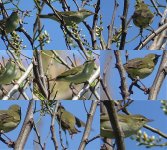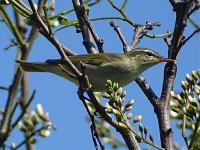Here's a second Leaf Warbler of my 4 day trip to Hegurajima, Japan.
It was seen together with an Eastern Crowned Warbler and there's plenty of choice really: Sakhalin, Kamchatka, Japanese, Arctic, (Pale-legged). Fact is, it may be that a sound recording is needed for a positive ID. There are 10's of soundfiles in my archive but they don't match in time with the photo-files yet...
Do you have a suggestion?
Hope to hear from you
cheers,
Gerben
It was seen together with an Eastern Crowned Warbler and there's plenty of choice really: Sakhalin, Kamchatka, Japanese, Arctic, (Pale-legged). Fact is, it may be that a sound recording is needed for a positive ID. There are 10's of soundfiles in my archive but they don't match in time with the photo-files yet...
Do you have a suggestion?
Hope to hear from you
cheers,
Gerben
Attachments
Last edited:







